On the way to Hellcat (M18 Hellcat)
The path from the start of the design of a light tank destroyer to a production vehicle, which became one of the most famous American self-propelled guns of the Second World War, contained several experimental samples that were not destined to go into series. Anticipating a possible entry into the war, in 1941, the Americans allocated a lot of money to retool the army. Since the fighting was planned to be conducted far from the American borders, the airborne forces and the marines were re-armed first of all. And what did the paratroopers always lack? Of course, tanks. All countries that had airborne troops at that time worked to provide them with any kind of armored vehicles. The United States did not stand aside; the industry was issued an order to create a T9 light airborne tank.
The Marmon-Herrington Company received an order for the development of an airborne tank in May 1941. Already in August, a full-size mock-up of the novelty, which received the designation Light Tank T9, was completely ready. Further development of the project led to the creation of the M22 airborne tank, which also entered history under the British designation Locust. It was the only airborne special-purpose tank, which was used as intended during the Second World War.
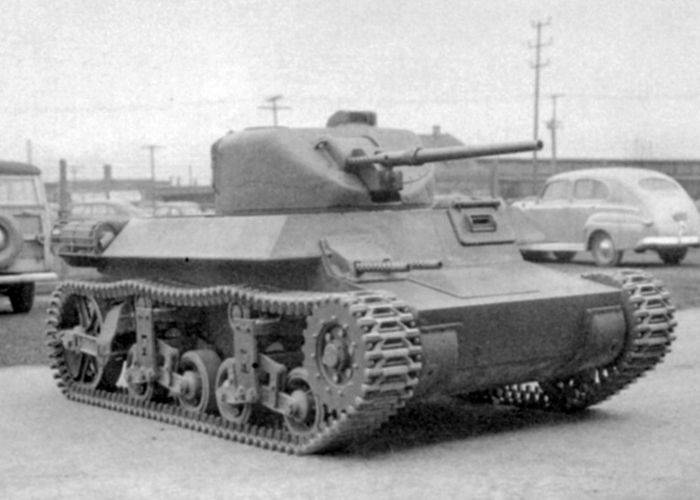
After the light airborne tank project was completed, in October 1941, the US military received from Marmon-Herrington a proposal to create an anti-tank self-propelled gun on its base. At the same time, the military tried for a long time to understand what makes the PT-SAU project, armed with the same gun as the Light Tank T9 installed in a similar tower, different. As a result of a kind of humor, the representatives of the Airborne Forces did not appreciate the anti-tank PT-SAU on the basis of the airborne tank refused.
This story is not even the planned self-propelled Hellcat could come to an end, but the case helped. The US ground forces were interested in a light highly mobile anti-tank self-propelled gun. All projects and attempts to create a similar car ended in nothing, and then an airborne assault ACS appeared on the horizon. At the same time, in the autumn of 1941, the program for creating a light tank destroyer 37 mm Gun Motor Carriage T42 was launched, the draft design of which was ready for October 27. The original concept of this vehicle was not much different from an airborne tank. The main difference was in the larger open-top turret, in which there was the same 37-mm M-5 cannon and the Browning M7,62 machine-gun paired with it 1919-mm. 8 December 1941, the Ordnance Department (Artillery Department) published recommendations for creating a tank destroyer that would have high speed, Christie suspension, and an 37-mm gun.
It is worth noting that for 1941, the 37-mm gun was still at the very least enough to fight most of the enemy tanks. The Americans did not yet know that German designers were working on the creation of tanks with thick anti-cannon armor. Since the self-propelled gun was no longer supposed to be airborne, its weight and dimensions increased during the design process. By January 1942, the project as a whole was fully completed. The order for the creation of the first two prototypes was placed not with Marmon-Herrington, which still could not assemble the first T9s, but with the large General Motors Corporation (GMC). The General Motors Buick Division received the order for the production of two pilot tank destroyers. At that time, Buick completely ceased production of cars, concentrating exclusively on military orders, the main production of the company was reoriented to production aviation engines.
The frontal booking (front of the hull and turret) of the T42 GMC tank destroyer did not exceed 22 mm, the sides and stern were covered with armor sheets with a thickness of only 9,5 mm. Such thin armor was a payment for high maneuverability and speed of the car. At the same time, the mass grown in the dimensions of the self-propelled gun would most likely exceed the mass of the landed Light Tank T9, which was about 7,5 tons. It was planned to install the Wright-Continental R-975 engine, which developed the power of the 300 hp, which provided the machine with a fantastic power density.
No sooner had Buick started to launch the T42 GMC, as the Artillery Department decided to make revisions to the draft. In the spring of 1942, taking into account the analysis of the fighting of the British army in North Africa, the US military came to the conclusion that 37-mm guns are no longer enough to arm tanks and, moreover, tank destroyers. Therefore, the SAU decided to install a more powerful 57-mm anti-tank gun. Established on self-propelled gun planned famous English "6-pound" - QF 6 pounder. Her baptism of fire took place just in April 1942, in North Africa. In the US Army, it was put into service in a slightly modified form, receiving the designation 57 mm Gun M1.
Already 18 April 1942, an agreement was reached on the creation of two prototypes of new tank destroyers, designated 57 mm Gun Motor Carriage T49. Like their predecessors, they had to be distinguished by excellent mobility and with a mass of about 12 tons, they could reach speeds up to 55 miles / h (about 90 km / h). The crew of SAU was supposed to make 5 people. Reservations for the turret, hull forehead and sides should be 7 / 8 inches (22 mm), the bottom and the roof of the hull - 3 / 8 inches (9,5 mm).
At the same time, the project of self-propelled guns underwent significant changes. If the maximum length of the design T42 GMC was 4715 mm, then the T49 GMC grew to 5280 mm. The increase in the length of the hull led to an increase in the number of track rollers - from four to five on board. The tower for the self-propelled gun was designed from scratch and was closed. And the body in its design turned out to be completely new development. Even the suspension has undergone significant changes. It was still based on the Christie system, but the candles (helical coil springs) were brought outside. This design solution allowed to partially get rid of one of the main problems of the Christie suspension - a large useful volume, which was occupied by the "candles" in the tank hull.
By the middle of 1942, the first two prototypes of the T49 GMC tank destroyer were ready. In July, these machines began testing at a special site in Aberdeen. The combat weight of the machine has grown to 14,4 tons. At the same time, a pair of two Buick Series 8 60 5,24-cylinder engines of 330 each was installed on it. Their total power was 49 hp It is worth noting that these engines have already been put on cars and were well mastered by the American industry, so that when starting production with TXNUMX GMC with engines there would be no problems.
Already during the tests it was found that the self-propelled gun cannot reach the stated speed in 55 mph. On tests, the prototype accelerated to 38 mph (about 61 km / h), which was still an excellent indicator for armored vehicles of that time period. In this case, the problem was not in the mass of the combat vehicle and the engines installed on the ACS, but in the torque converter, in which there was a significant loss of power. In principle, the problem with the drop in power was solvable, in the future it was planned to install a hydraulic transmission on the ACS. An even simpler solution was to search for more powerful engines. Despite the fact that the specified speed characteristics could not be achieved, the T49 GMC tank destroyer performed well when driving over rough terrain. The suspension behaved very well, and the tracks did not have a tendency to fly even when driving at high speed. Tests showed that the ACS looks quite good and promising.
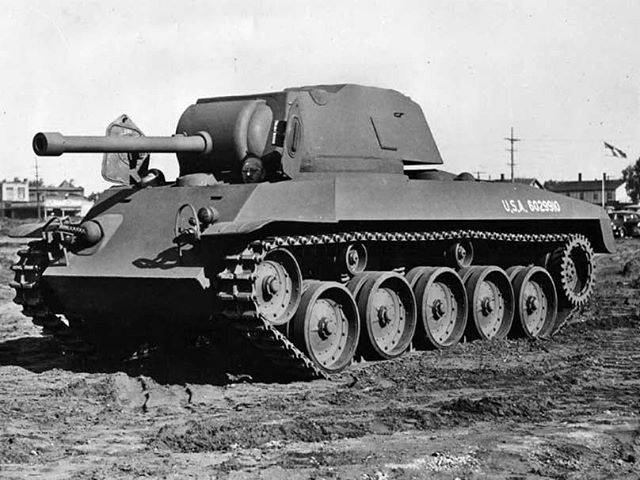
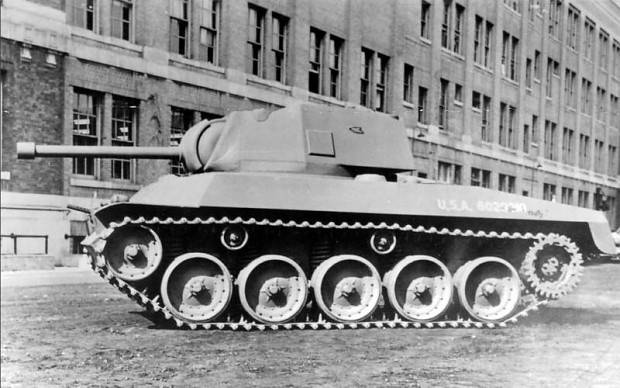
But this sample did not go into mass production. Even during the tests, the US military once again thought about replacing the main gun and reinforcing the machine’s weapons. As a result, this was the reason that the work on the T49 GMC project was curtailed. The new goal was the installation of the 75-mm M3 gun on the PT-SAU, which was specially created for the American medium tank M4 Sherman. The difference in armor penetration with the 57 mm Gun M1 was minimal, which could not be said about the power of 75-mm ammunition. So the next project was born, which received the designation 75 mm Gun Motor Carriage T67.
To be placed on the T67 GMC new 75-mm gun, it was decided to borrow an open turret of a round shape with the T35 GMC (prototype of the future ACS M10). At the same time, the frontal part of the hull underwent minor changes, the exchange gun disappeared from there, and the reservation of the hull's forehead was brought up to an inch (25,4 mm), while the bottom and top of the hull, as well as the sides and stern of the self-propelled gun were made thinner. Since the tower was open, it was easy to place a large-caliber 12,7-mm Browning M2 machine gun from above. The first sample of the T67 GMC was ready in November 1942 of the year.
In the same month, the new tank destroyer launched a series of tests at the Aberdeen Proving Ground. Despite the slightly increased mass, the new self-propelled gun showed approximately the same driving characteristics. Successful proved and fire tests. The chassis, which was previously created with a margin, made it possible to place a new 75-mm gun on it without any problems. The firing showed satisfactory values of accuracy of fire. At the same time, according to the test results, it was decided to switch to a torsion suspension, it was also planned to replace the power plant with a more powerful engine. From Sparky two "Buick" power 330 hp were going to give up in favor of the 9-cylinder air-cooled air-cooled engine with an 400 horsepower, which eventually appeared on the lightweight tank destroyer M18 Hellcat.
Upon completion of the tests at the Aberdeen proving ground, the T67 GMC self-propelled gun was recommended for standardization, but the military once again intervened. This time they asked to replace the 75-mm gun M3 (length 40 caliber) with a new long-barreled tank 76-mm gun M1 (length 55 caliber) with ballistics from an anti-aircraft gun. The gun was distinguished by the best armor-piercing characteristics, which, of course, was one of the most important values for a tank destroyer. The T67 GMC chassis, as demonstrated by the tests carried out, should have made it possible to install this instrument. It is possible that the T67 GMC with the new 76-mm tool could go into mass production with minor changes, but this did not happen. Another tank destroyer 76 mm Gun Motor Carriage T70 stepped onto the stage.
The concept of a tank destroyer has not changed, but the technical implementation of the T70 GMC was completely different. The order to manufacture the first 6 pilot self-propelled guns was received in January 1943. The first prototype was assembled in the spring of the same year. Instead of a pair of two Buick engines, the radial Continental R-975-C1, which developed the power of the 400 hp, was installed on the new combat vehicle. In order to achieve a better balance, the transmission of the 900T Torqmatic was decided to move forward and Christie’s suspension was finally abandoned in favor of individual torsions. The original decision of the American designers was the installation of the engine and transmission on special rails, guides, on which they could easily roll out in the event of repairs or dismantling for replacement. The turret and hull of the new tank destroyer were assembled from rolled homogeneous armor, and the front of the turret was cast. Bronelists were connected to each other by welding. The 76-mm gun was placed in a welded turret open at the top, in which there was enough space for the ammunition. At the top of the tower was a large-caliber 12,7-mm machine gun M2.
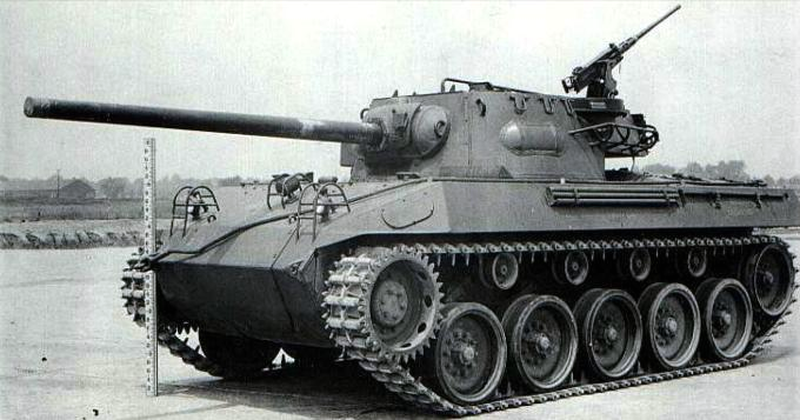
The maximum booking of the hull's forehead was 38 mm, while most of the projections of the ACS had a total 13 mm booking. The forehead of the tower received armor - 25 mm. Ammunition 76-mm guns M1 consisted of 45 shots. The self-propelled gun mass reached 17,7 tons, which, together with the 400-strong engine, still allowed to provide outstanding speed, the Hellcat accelerated to the speed of 70 km / h, and the crews compared the self-propelled driving with a racing car. The open tower had both its obvious advantages and disadvantages. The advantages include improved visibility, which greatly simplified the task of observing the enemy during the battle. But at the same time the self-propelled crew was very vulnerable to enemy mortar and artillery fire, as well as from its infantry in the melee. All this, coupled with a weak reservation, which does not allow to support the advancing infantry, made the M18 a very highly specialized machine, which was supposed to hunt enemy tanks from ambushes, if necessary, very quickly changing its position.
It is worth noting that the T70 GMC anti-tank self-propelled gun, which appeared as a result of serious alterations, was eventually put into service under the designation M18 GMC aka Hellcat, in many respects was a completely different machine. The hull, the tower, the engine, the suspension, the new transmission that moved forward — all this has changed and taken away from American designers, which during the war is particularly expensive and is often paid for by human lives on the battlefield. When launched into mass production of the conceptually same tank destroyer T67 GMC, replacing the 75-mm cannon with the 76-mm cannon could save up to six months. The first T70 GMC passed combat tests in Italy only at the end of 1943. And in February, 1944 was standardized under the designation M18 Gun Motor Carriage.
Information sources:
http://warspot.ru/5858-v-polushage-ot-hellcat
http://alternathistory.com/m18-hellcat-istoriya-vedmy-chast-pervaya
https://wiki.wargaming.net/ru/Tank:A41_M18_Hellcat/История
https://www.aviarmor.net/tww2/tanks/usa/spg_t42.htm
Open source materials
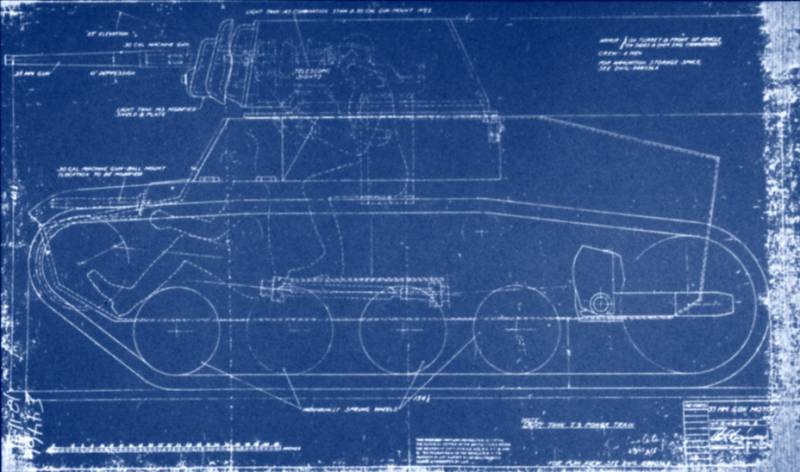
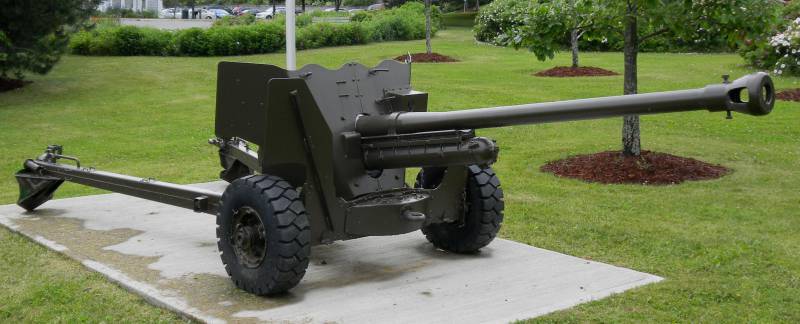
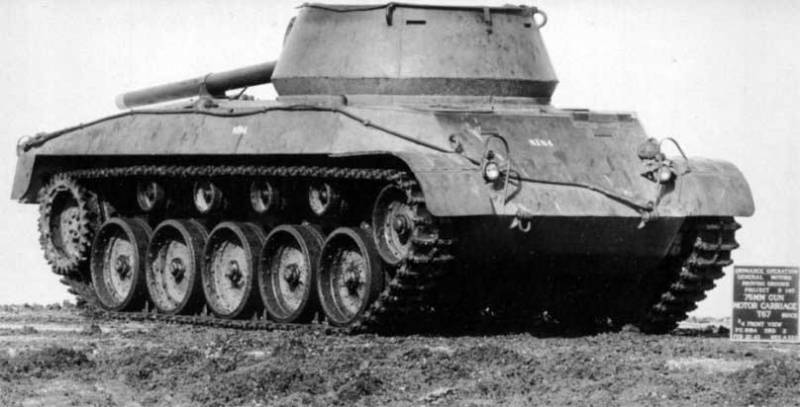
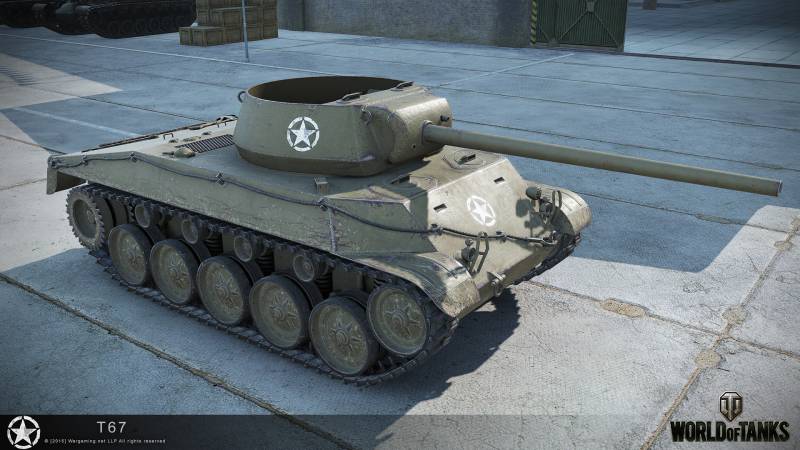
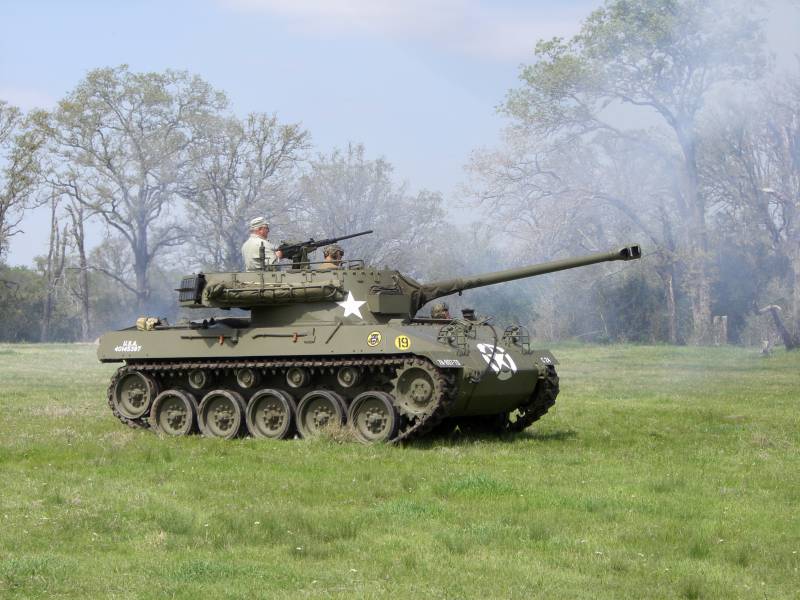
Information